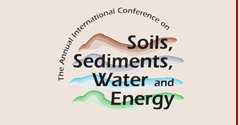Abstract
Arsenic-contaminated soil at a Superfund site in Missouri was treated during 2005 using a ferric sulfate-based additive. Initial testing indicated that 20 percent Portland cement was needed to treat the soil; in contrast, only around 2 percent of the ferric sulfate additive was required. The exact dosage depended on the arsenic content of the soil. Arsenic screening using X-ray fluorescence (XRF) was used for the in-field determination of the dose required for each batch of soil. Varying levels of available iron in the soil was an additional factor in selecting the dose of treatment chemical. More than 70,000 tons were successfully treated and disposed, at an average chemical dose of 2 percent. The correlation of XRF arsenic data with wet compositional analysis, the relationship of available iron to arsenic ratio with TCLP-arsenic analysis, and the dosage-response for chemical treatment of soil comparing the bench-scale and full-scale treatment data are discussed.
Recommended Citation
Chowdhury, Ajit K.; Stanforth, Robert R.; and Overby, Ross
(2010)
"Treating Arsenic-Contaminated Soil At A Former Herbicide Blending Facility,"
Proceedings of the Annual International Conference on Soils, Sediments, Water and Energy: Vol. 12, Article 5.
Available at:
https://scholarworks.umass.edu/soilsproceedings/vol12/iss1/5
